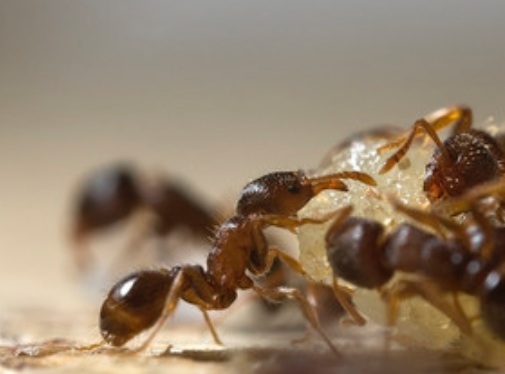Small insects such as Pavement Ants may gain access to your home through tiny gaps or cracks in the foundation — mainly around doors or windows. While there are ways to deal with an ant infestation, larger infestation require the use of chemical treatments. Make sure you call a licensed ant exterminator to do the work and avoid using any types of insecticides on your own.
You should inspect such areas thoroughly and seal any potential entry point using exclusion material such as caulk.
Steps for treating Pavement Ants
1. Inspect
The treatment of Pavement Ant infestation should start with a thorough inspection of the property, both in the inside and outside, to notice mounds or any other potential nesting sites. In the exterior, the nesting sites for Pavement Ants may include pavement driveways, curbs, landscaping, mulch and rocks. When inspecting the interior, be sure to check areas above false ceilings, beneath toilets and in wall voids for possible signs of a pavement ant infestation.
2. Treat all colonies
Once you’ve noticed the exterior Pavement Ant mounds, you can drench them with an insecticide, or use a gallon sprayer. Drenching involves applying a lot of liquid insecticide to drown ants in the nest as well as the surrounding areas. Before using the product, be sure to read the label for specific instructions on mound treatments. Keep away pets and children from all the treated areas until the solution completely dries. We carefully dust indoor colonies using insecticide and a Hand Duster.
3. Spray & Dust Treatments
All handling of chemicals should only be done by licensed professionals. Apart from treating the colonies, our technicians will thoroughly inspect both the inside and outside for other entry points, hiding places and trails for Pavement Ant. For all locations where we suspect or see Pavement Ant activity, we treat them using a variety of insecticides. When spraying the outdoor, we make sure to spray a protective barrier around your home. We sometimes use a fan spray of about 3 feet height on the side of the house and between 3 and 6 feet high above the ground. This can provide excellent protection. Indoor colonies can be treated using residual dust pesticides. We dust all areas where we suspect Pavement Ant activity — inside cracks and voids—with a professional Hand Duster and insecticide.
If you have an ant problem, get a licensed professional to do the work. Don’t handle any chemicals.
